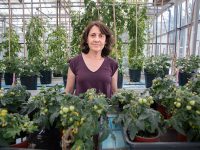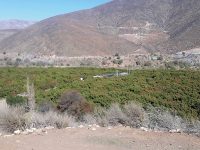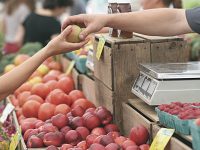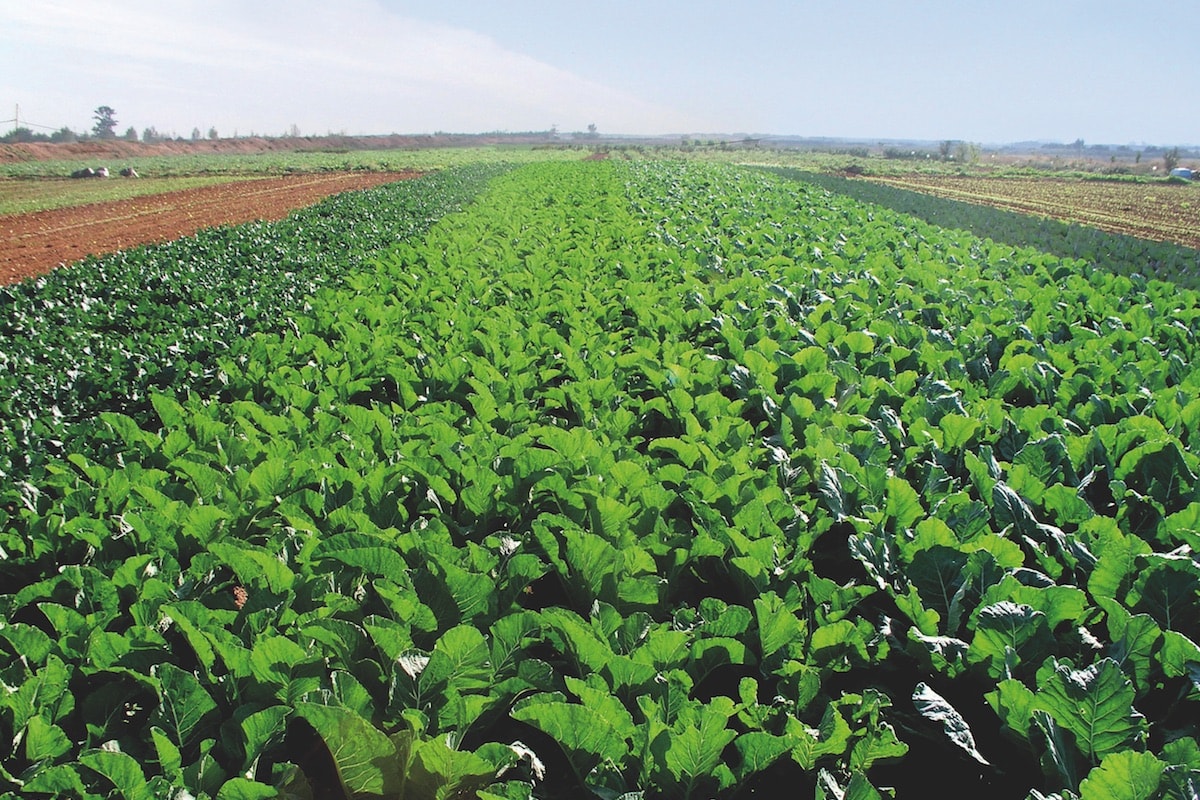
A Valencian proverb says «Who plants cabbages in July will be able to eat them at anytime». This is the topic of this article, the cabbage family, a very important family in the Valencian fields and tables. The proverb points out that sowing in the month of July is the key to a successful cultivation of cabbages.
The planting of seedlings is done in the middle of summer; while on holiday, now and again, we can sow. This phase lasts 30 or 40 days, and it is a special kind of planting, since the planting is done in winter and spring and they have to deal with the lack of light and the low temperatures, in the summer we have an excess of these two environmental factors. The main concern is to have access to a shading system during the hottest hours of the day and to water for irrigating whenever necessary and preventing the plants from becoming thirsty, since, according to another Valencian proverb «In the month of July, better look for shade not the sun»

Flowering of cauliflower in summertime. / Josep Roselló
The first of the proverbs also tells us that we will have cabbages for a long time. It is thus because we can stagger the harvest, with only one time for sowing, using varieties with different growing cycles. Thus, we have «hot» varieties, which are harvested during Christmas. Others are harvested during January, and these are allegedly the best (another proverb says «January cabbage, as good as a lamb»). Finally, we have late varieties, also called «frozen», with cycles of 140 to 160 days, which are harvested in spring. And everything sowed at the same time.
As we can see, a lot of days are spent in the farmlands during winter, because these plants stand the cold quite well, and have little health problems, which is something to be thankful for.
As they are quite big, they need a wide planting distance, 70-75 cm between rows and 50-70 cm between plants, depending on their being of the early or of the late kind. We can use these empty spaces for companion planting, planting for example lettuces or endives, which reminds us of another saying: «between cabbage and cabbage, lettuce». They are short cycle plants living together with long cycle plants and can be harvested before they hurt one another.
Seedlings are transplanted when they are about 15 cm long. They are transplanted in the evening to avoid the heat of the morning, since this is done by the end of August and beginning of September. They are immediately irrigated, and irrigated once again before the dirt dries. The work is done in friable soil. If we make a flood irrigation, we will have to wait 30 to 40 days to irrigate again, and after that, we will have to irrigate every 15 days or so, depending on the land and the climate. If we make drop irrigation, then we have to avoid the formation of puddles.
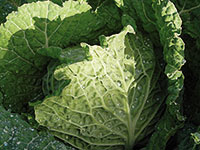
Valencian white cabbage. / Josep Roselló
Cabbages are harvested in the coldest months or in spring, as we have seen. They are very advisable for their consumption during the winter. They can be eaten raw or boiled, in salads, soups or stews. Besides, they have a great deal of vitamin A, with antioxidant properties. However, its most remarkable characteristic is its flavour, which is due to glucosinolates and derivatives, thought to prevent cancer.
In order to get seeds, the best plant is marked, the one with a strong growth and with all the characteristics we want to keep. During the flowering period we have to eliminate other plants with which they might hybridise, since in this species to hybridise is quite usual among subspecies.
It is advisable to protect the seeds, when the pods are almost dry, covering them with a fine cloth that allows transpiration, since they are coveted by the birds. We can plant more than one fanegada (831 m2) with the seeds found in only one plant.
The common name “cabbage” includes white cabbages, red cabbages and Savoy cabbages. One of the most popular kinds of white cabbage is the Valencian variety, a medium cycle plant, sowed in July and harvested between January and February. These cabbages are quite heavy, with hearts of about 2 kg, big and somewhat flattened. It is a powerful plant with a fat stem and short, big, greyish-green leaves and pronounced leaf veins. It has produced new varieties and, crossed with the variety from Murcia, it produced the Aranjuez cabbage.
The advise given can be also applied for their close relatives the cauliflower and broccoli, which share the cycle and necessities of the cabbage.
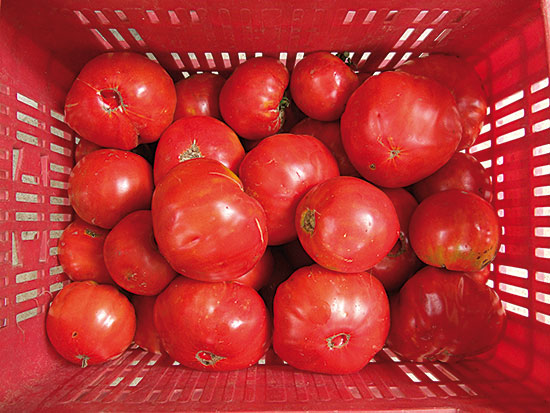
Valencian tomato of the «xato» kind, or «female» / Josep Roselló
The best fruits
The Valencian tomato
The Valencian tomato is one of the better-known vegetables, and one of the most appreciated too, among the Valencian population. In the markets, they stand out above other varieties, and are also sold at a higher price. It is a summer tomato, very good for salads.
It is a very big fruit, with a very intense shade of red and a green peduncle; the shape of the fruit may vary, since under tomaca valenciana (Valencian Tomato) we find three different kinds of fruit. The masclet (male) has the shape of a heart, with a very pointy and characteristic tip; the xato (flattened) is slightly flattened, with no tip and quite big; finally, we have a third kind which is very big and also shaped in the form of a heart.
It is a fruit with a very strong flavour, fleshy and juicy, which makes it suitable for fresh consumption. It is always highly valued in tastings. In fact, for many consumers it is the quality benchmark for summer tomatoes.
If we cultivate Valencian tomato we have to take into account that it is not an early variety; it likes high temperatures and the sun. It needs an accurate management, since it is not very productive, and it is necessary to fertilise many flowers. That is why it is advisable to control the vigour of the plant. If we do not act this way and we overfeed it and prune it severely, we run the risk of strengthening its vigour against the fertilisation of the flowers and, therefore, of damaging the final harvest.
It is easy to obtain seeds for exchange between small producers, because it is a highly valued variety. I encourage you to do it: keep the seeds of the best tomatoes you have tasted and plant them next year!

